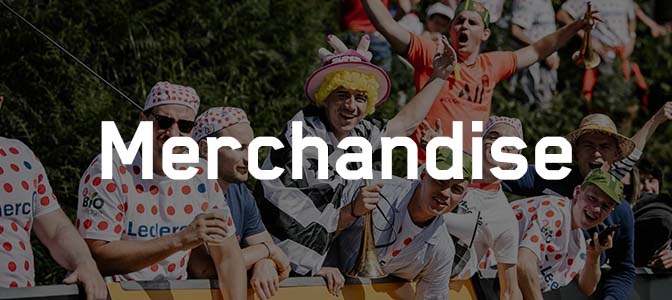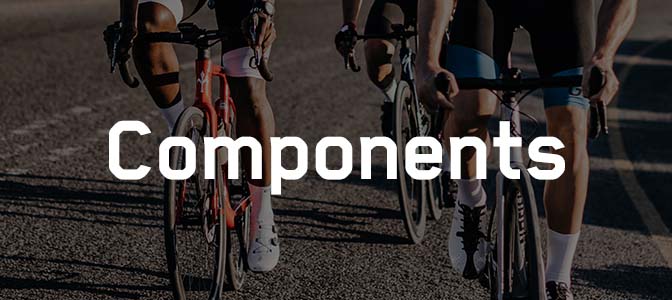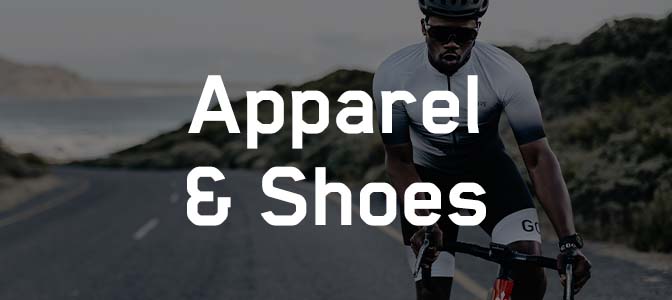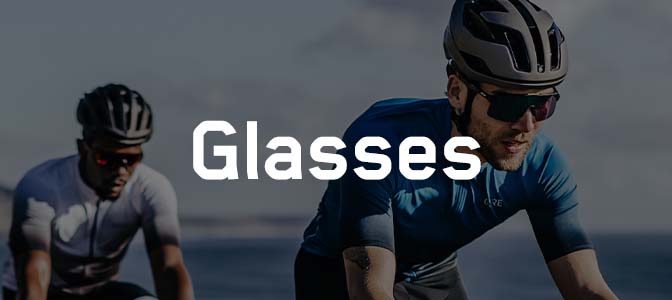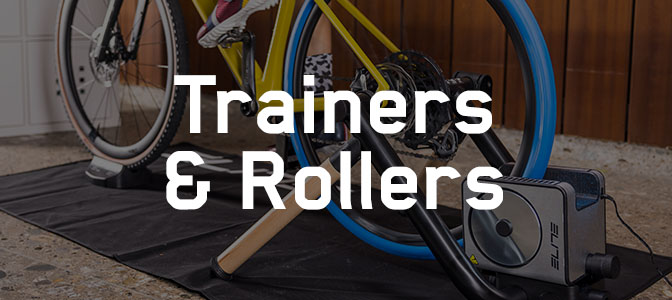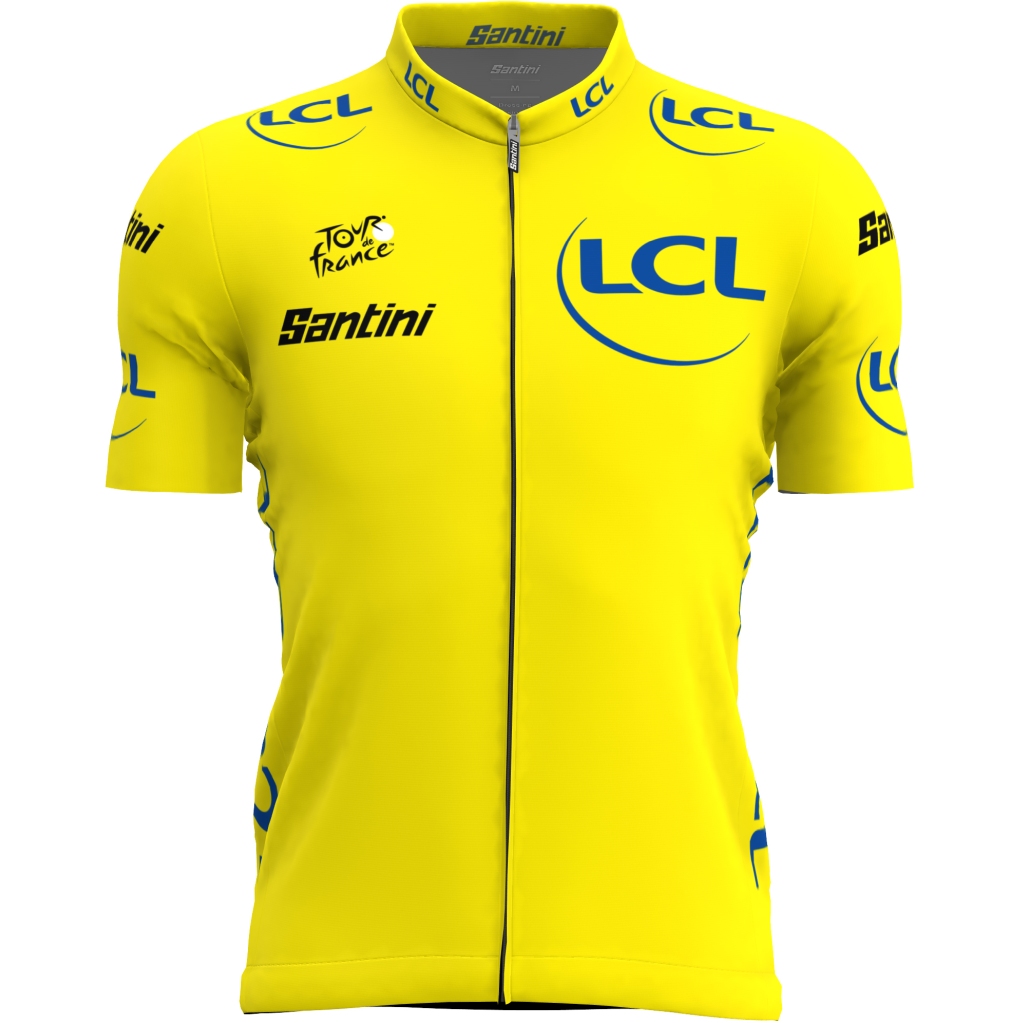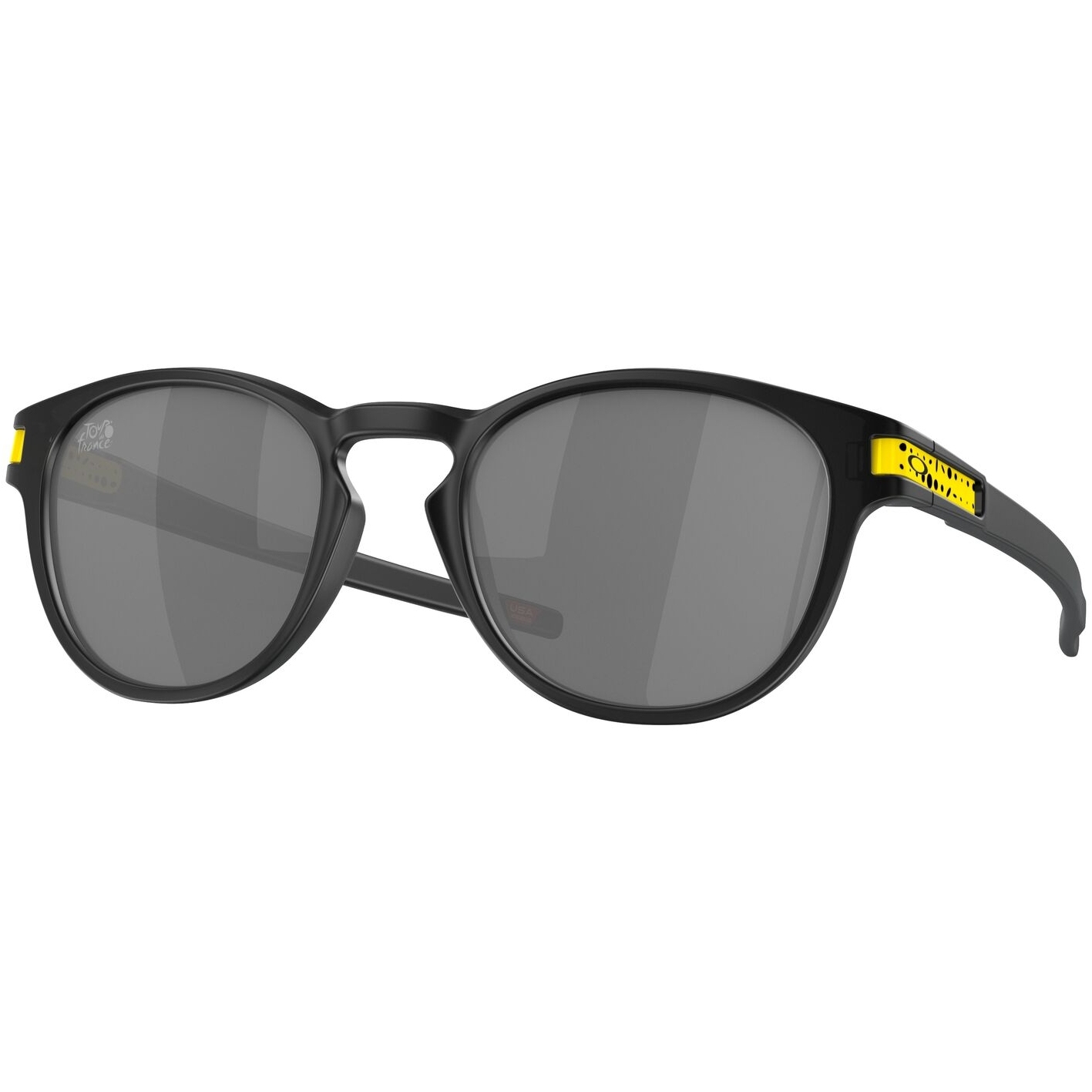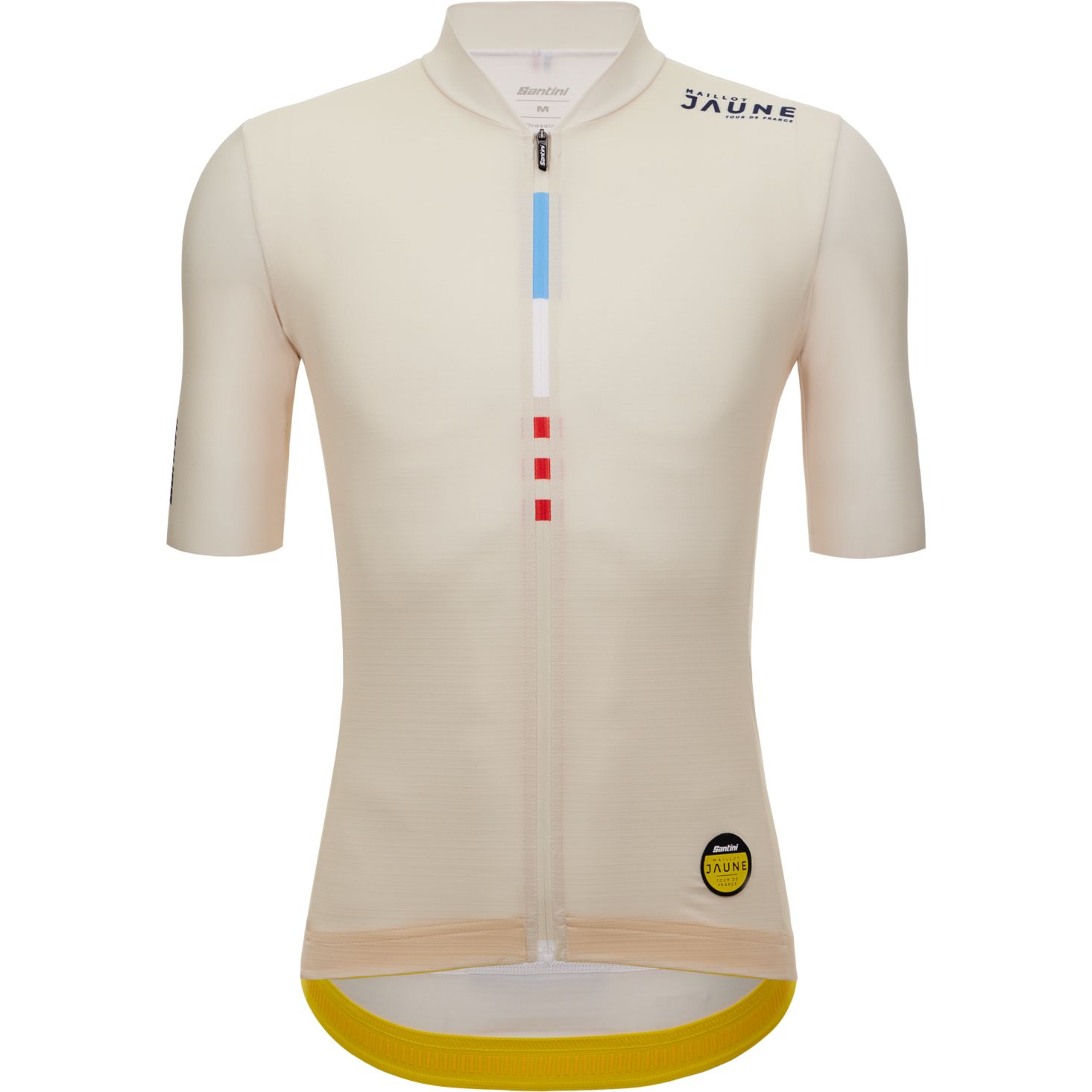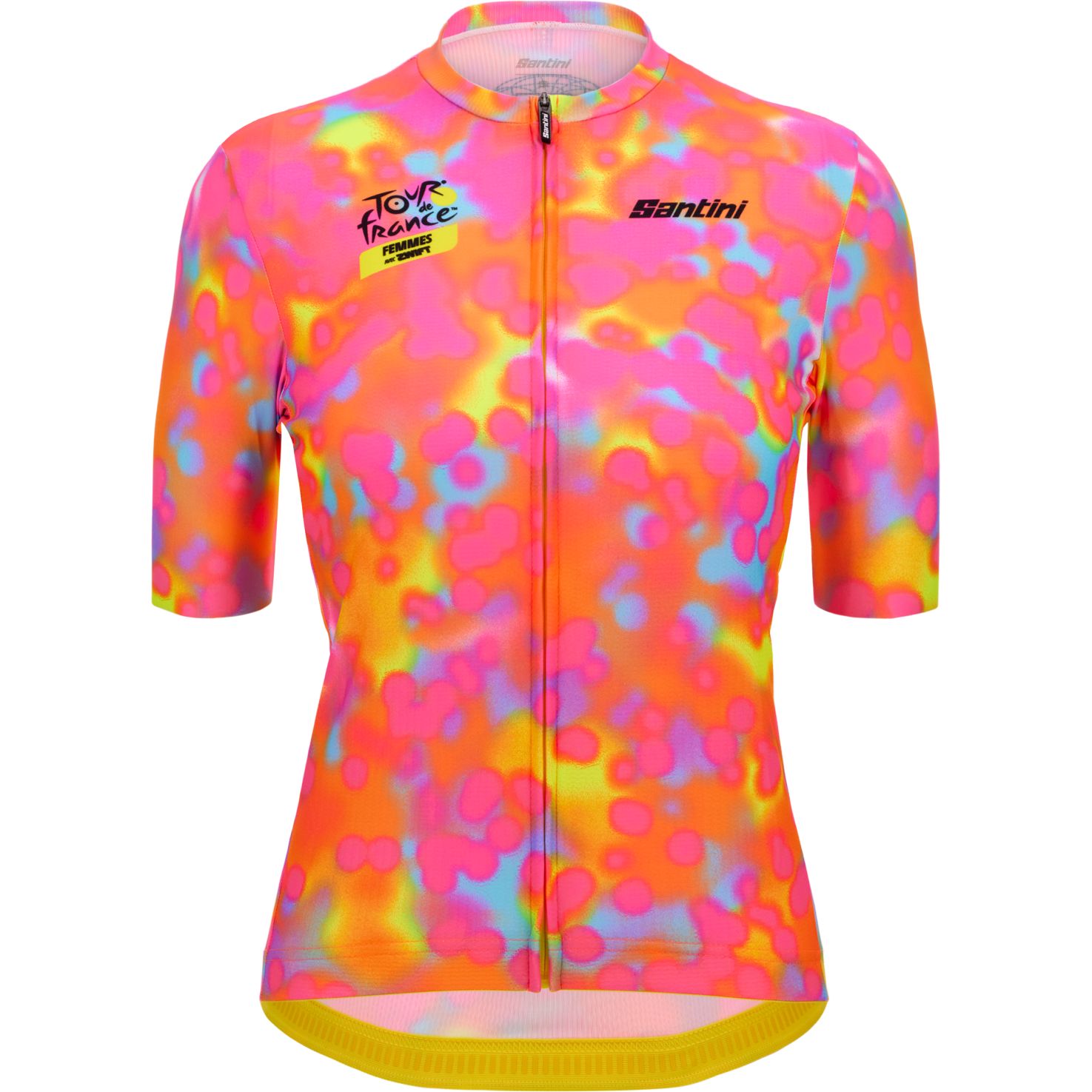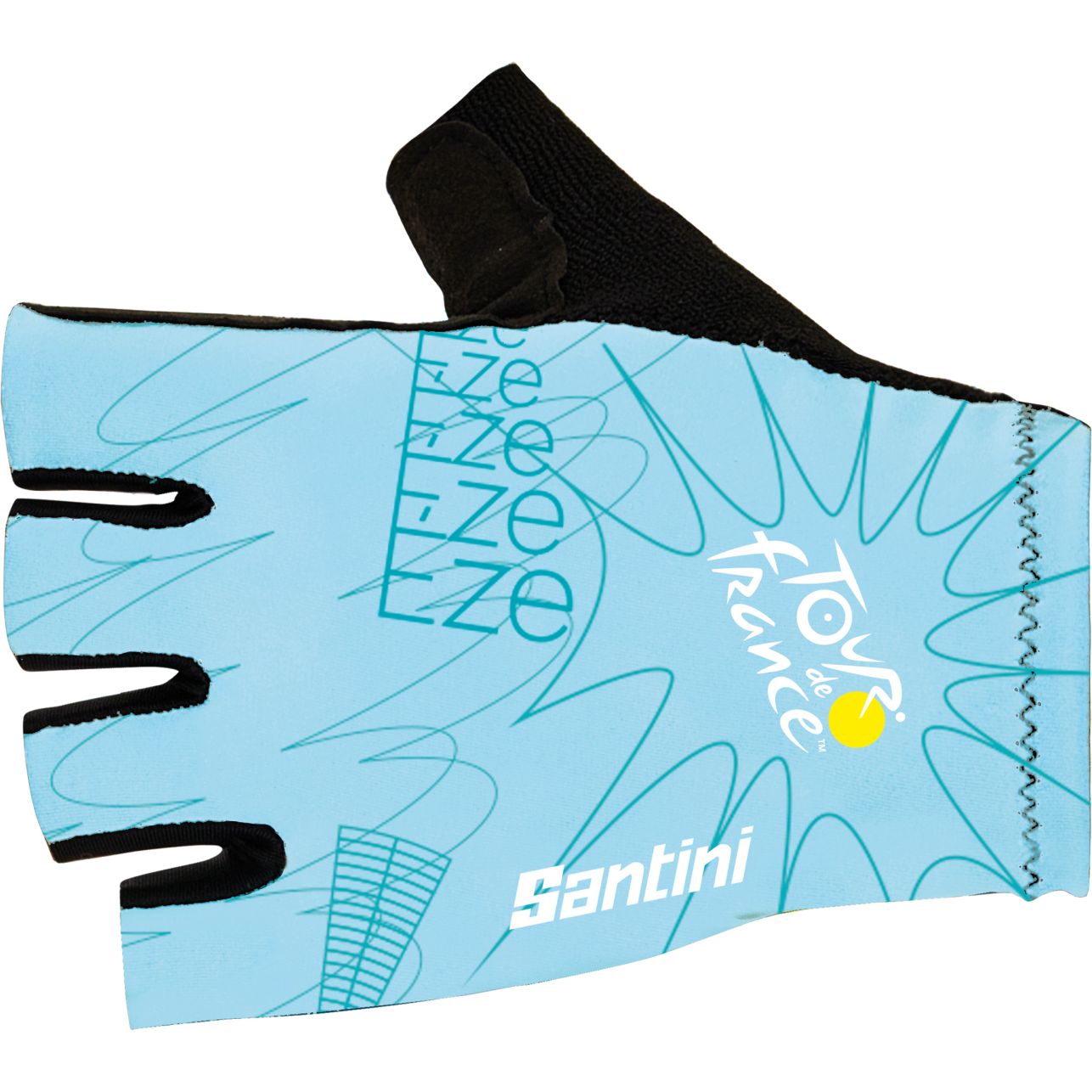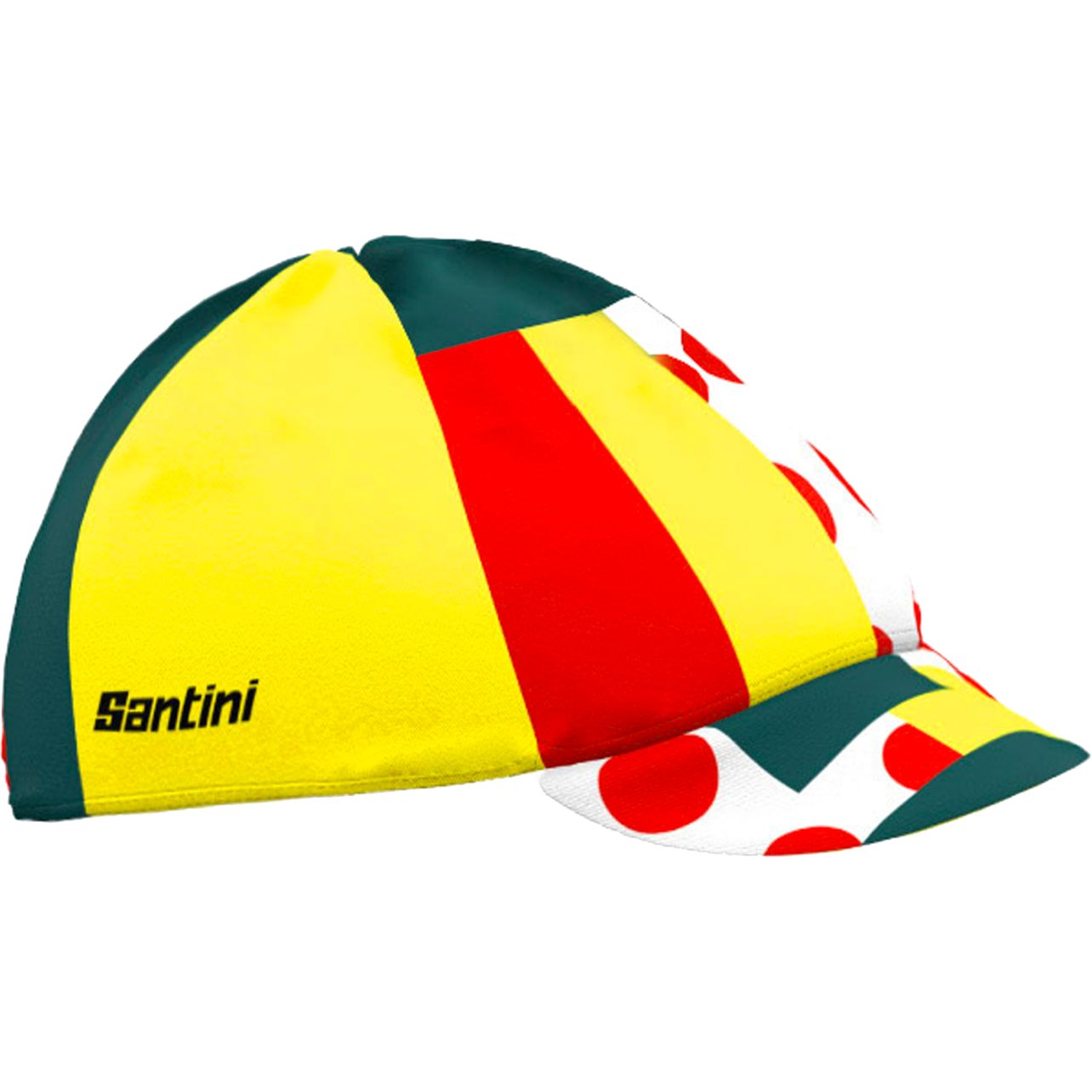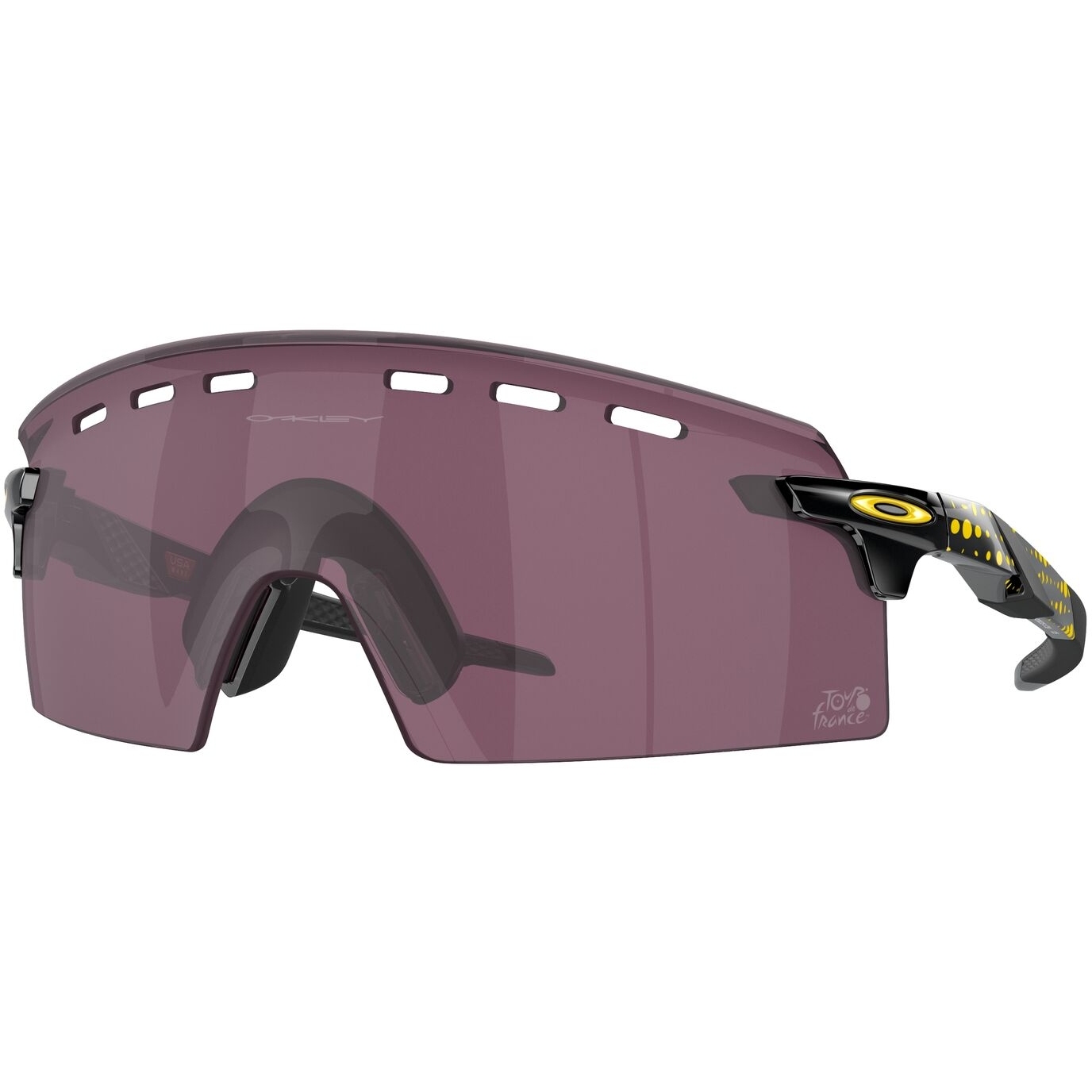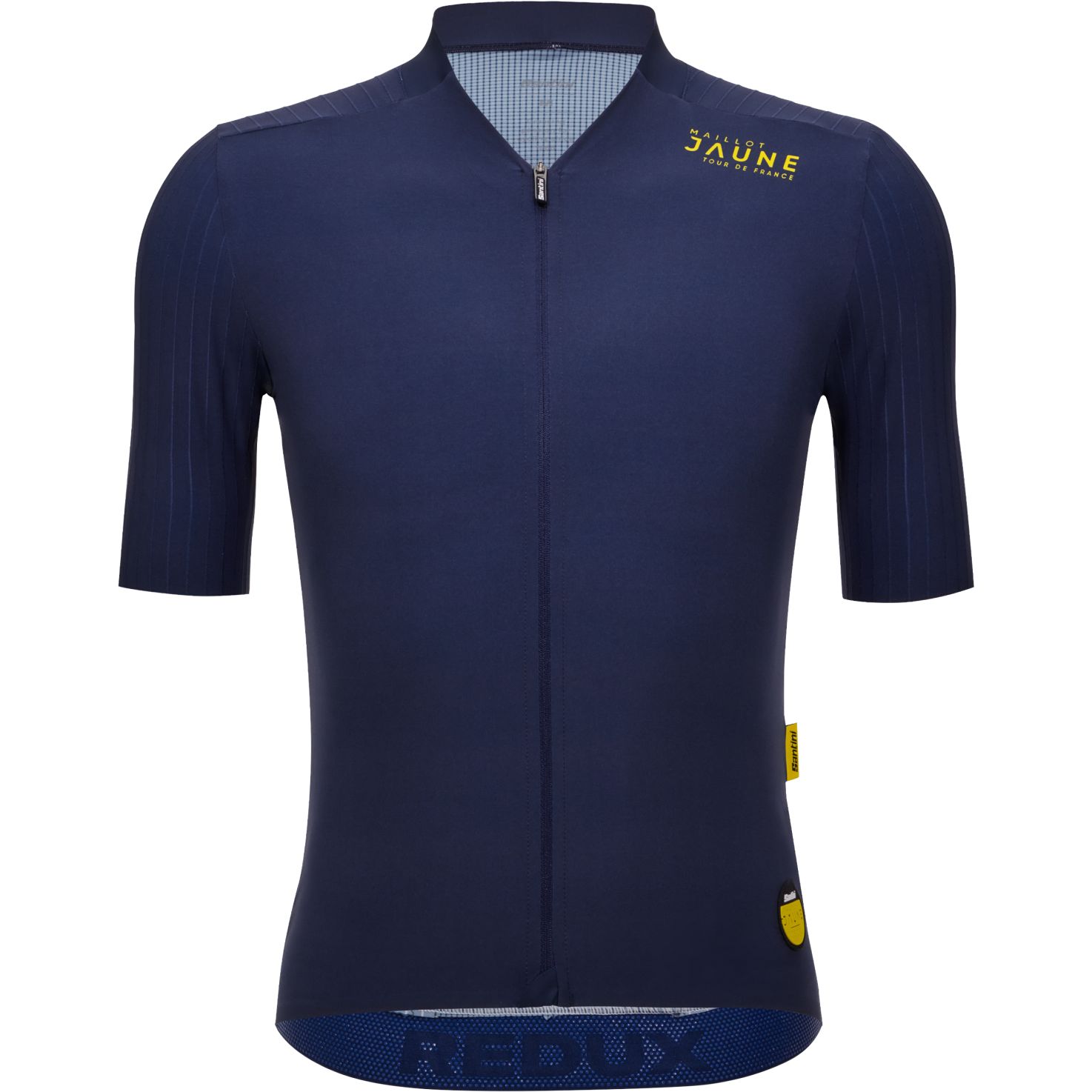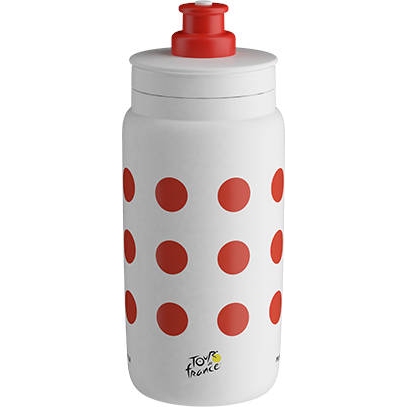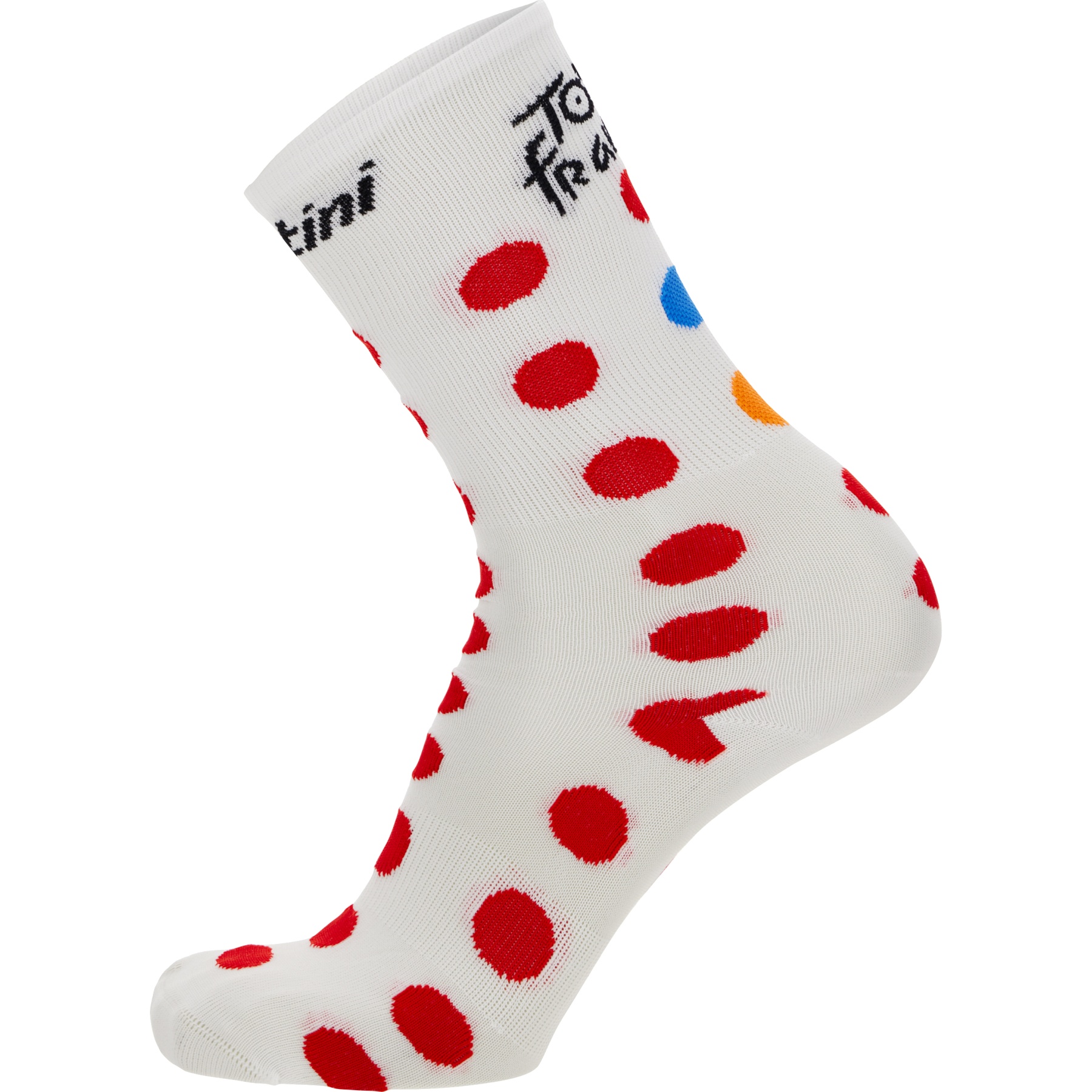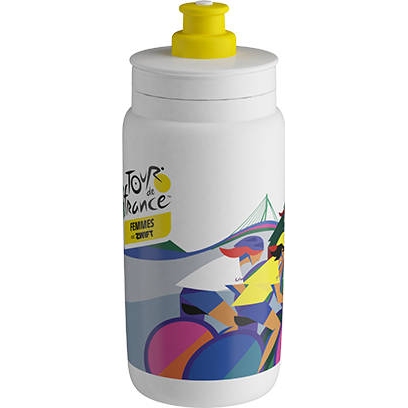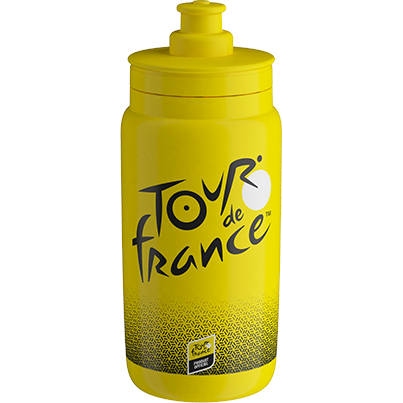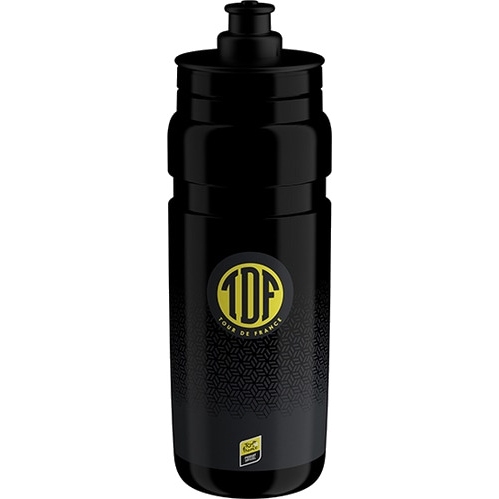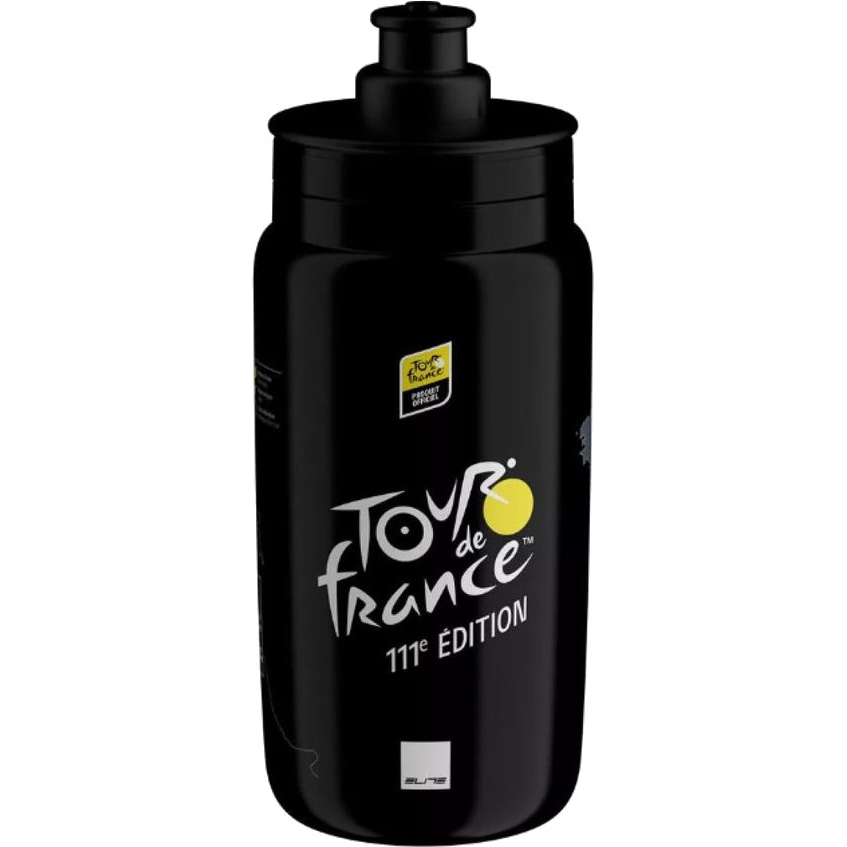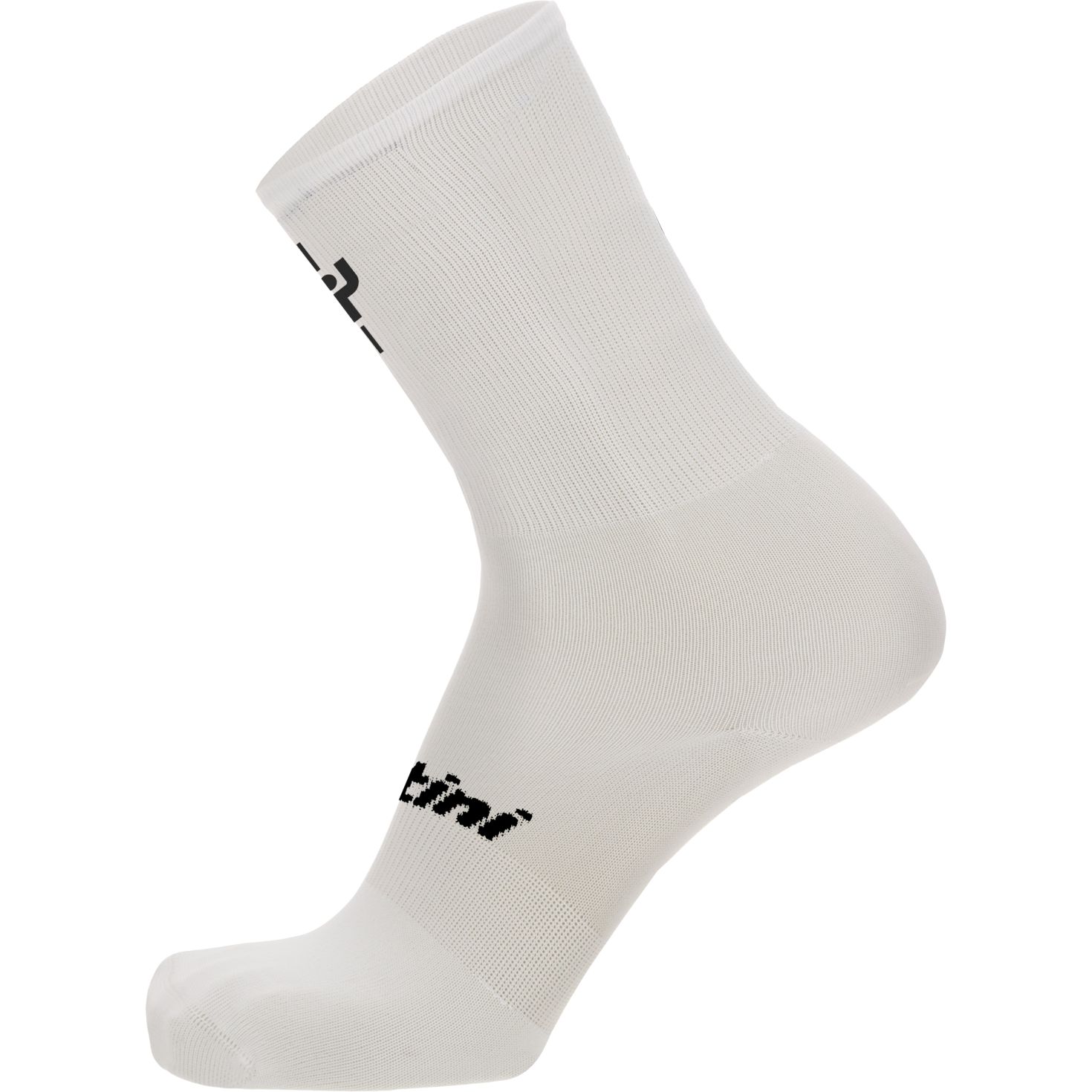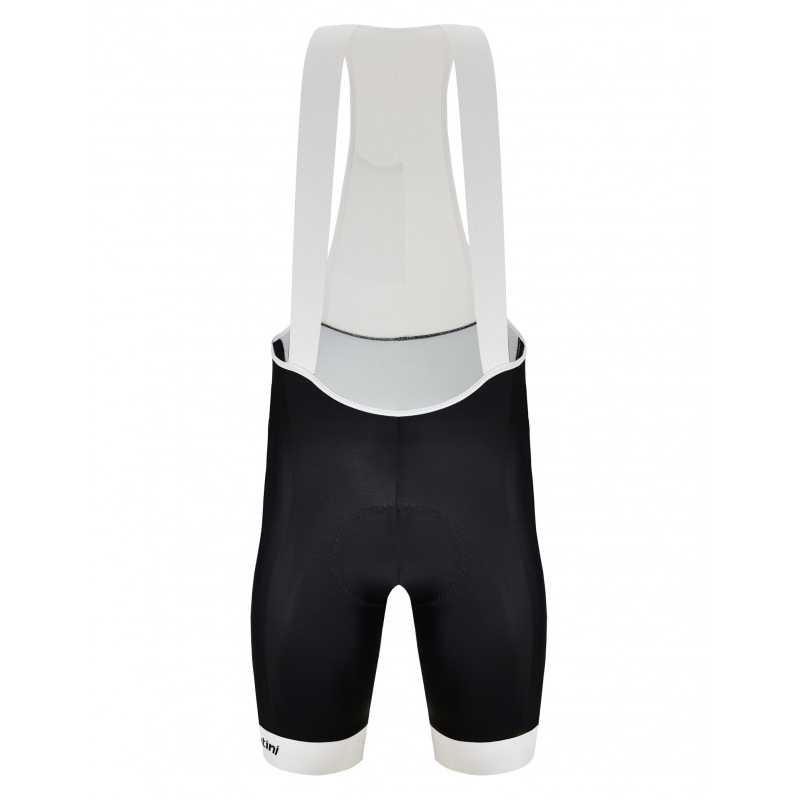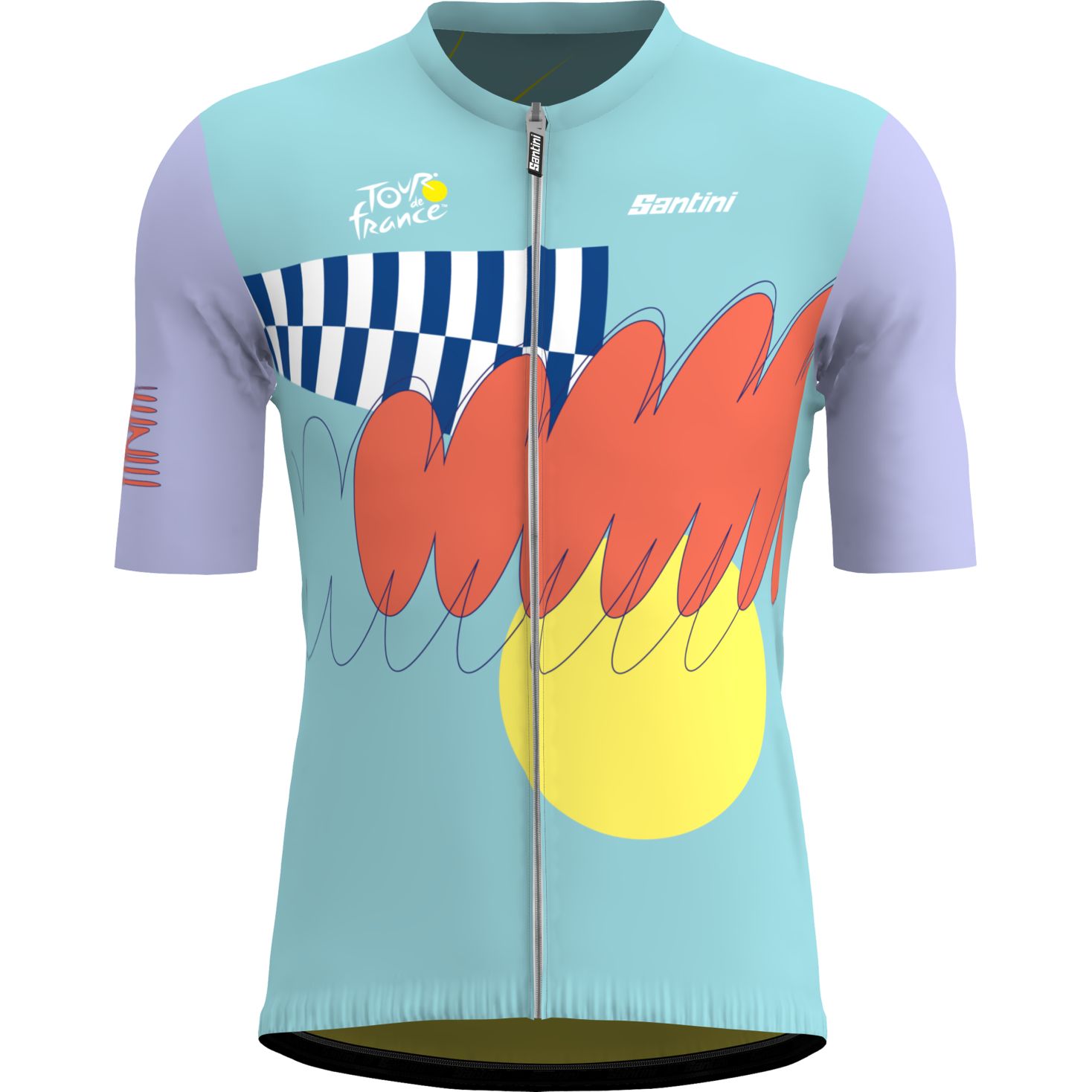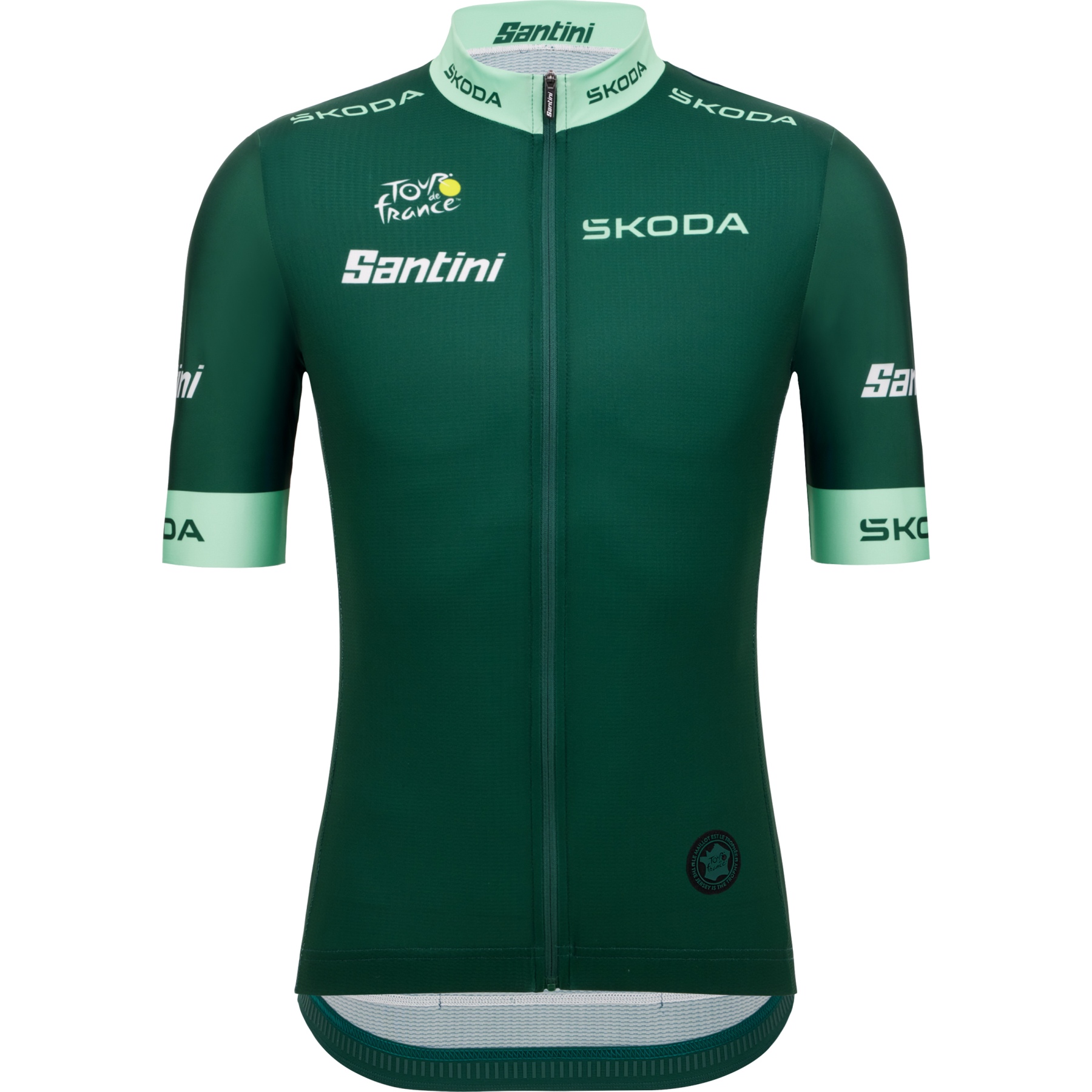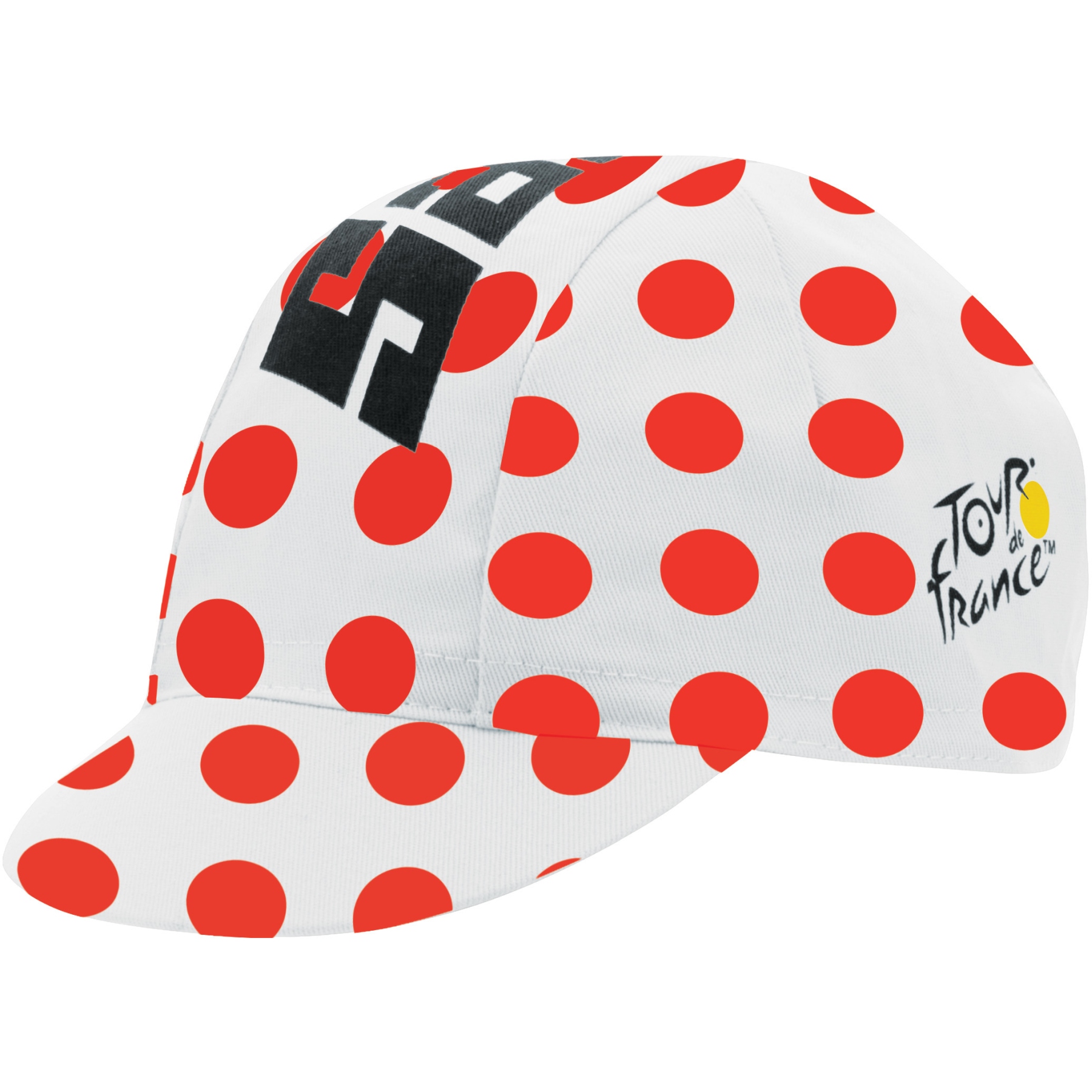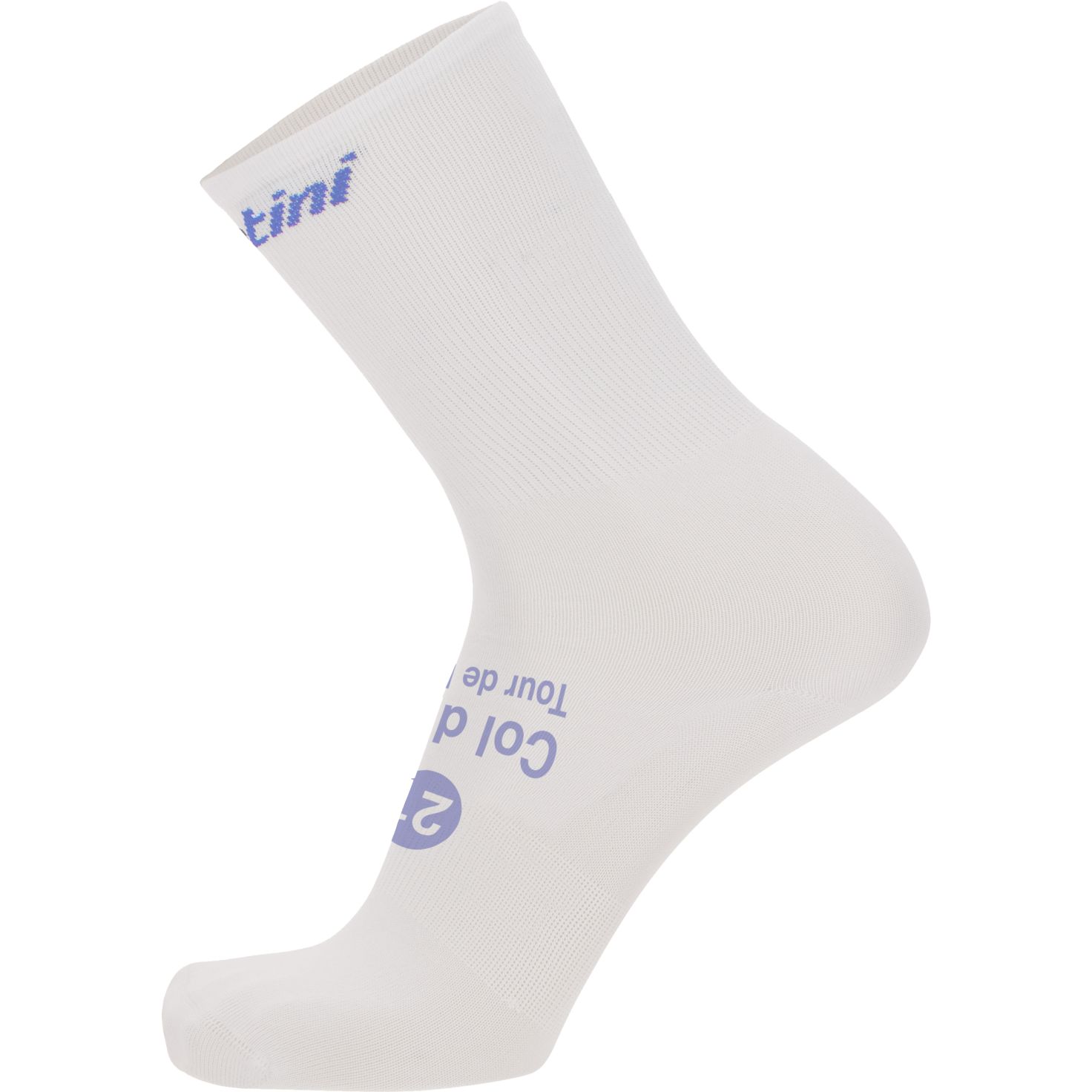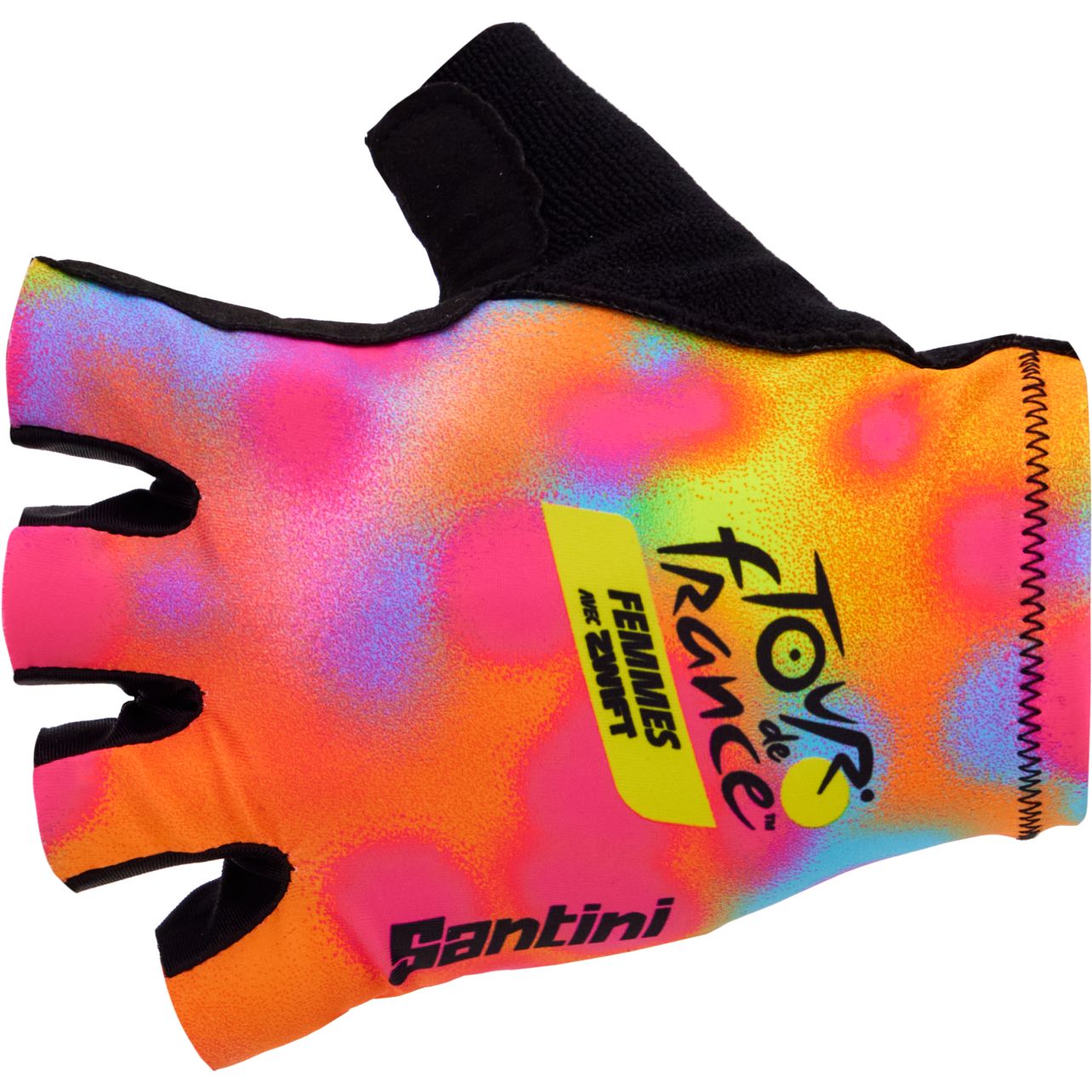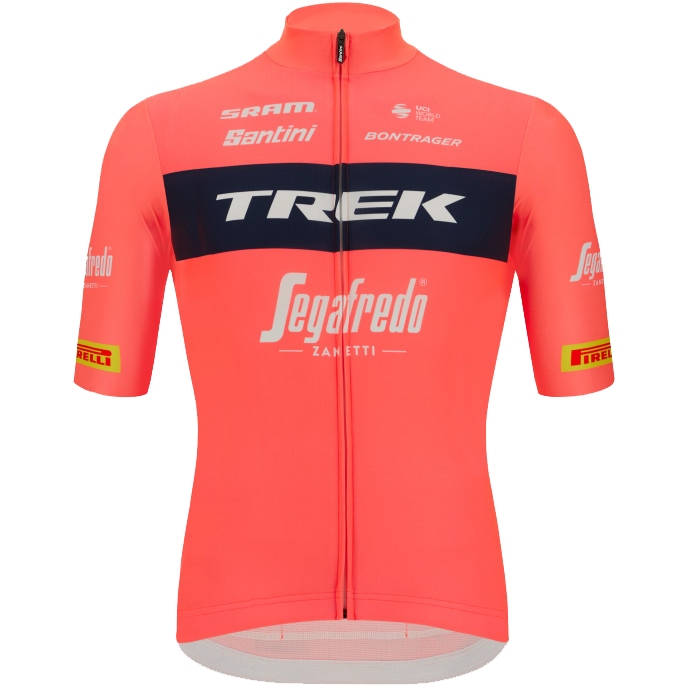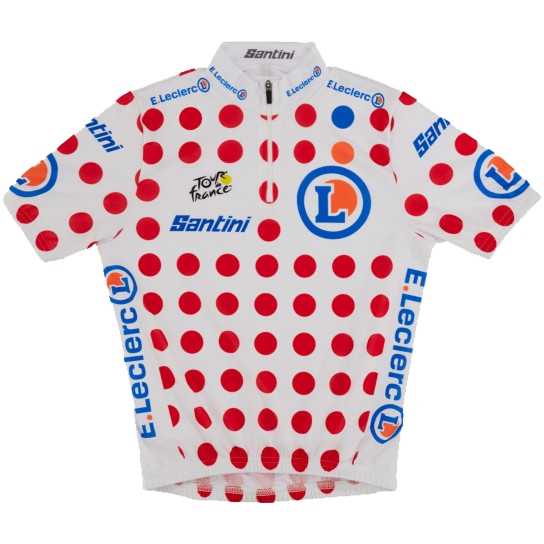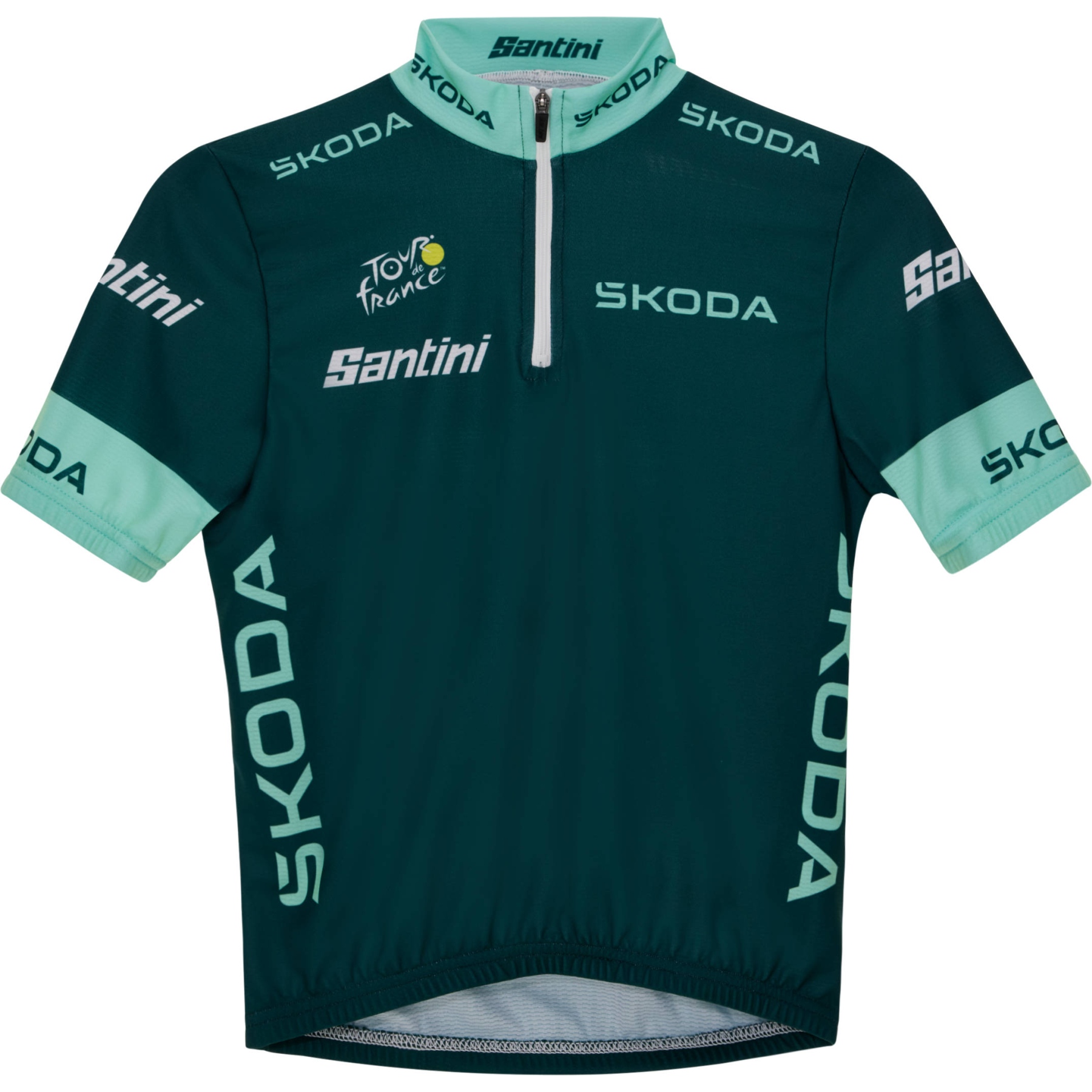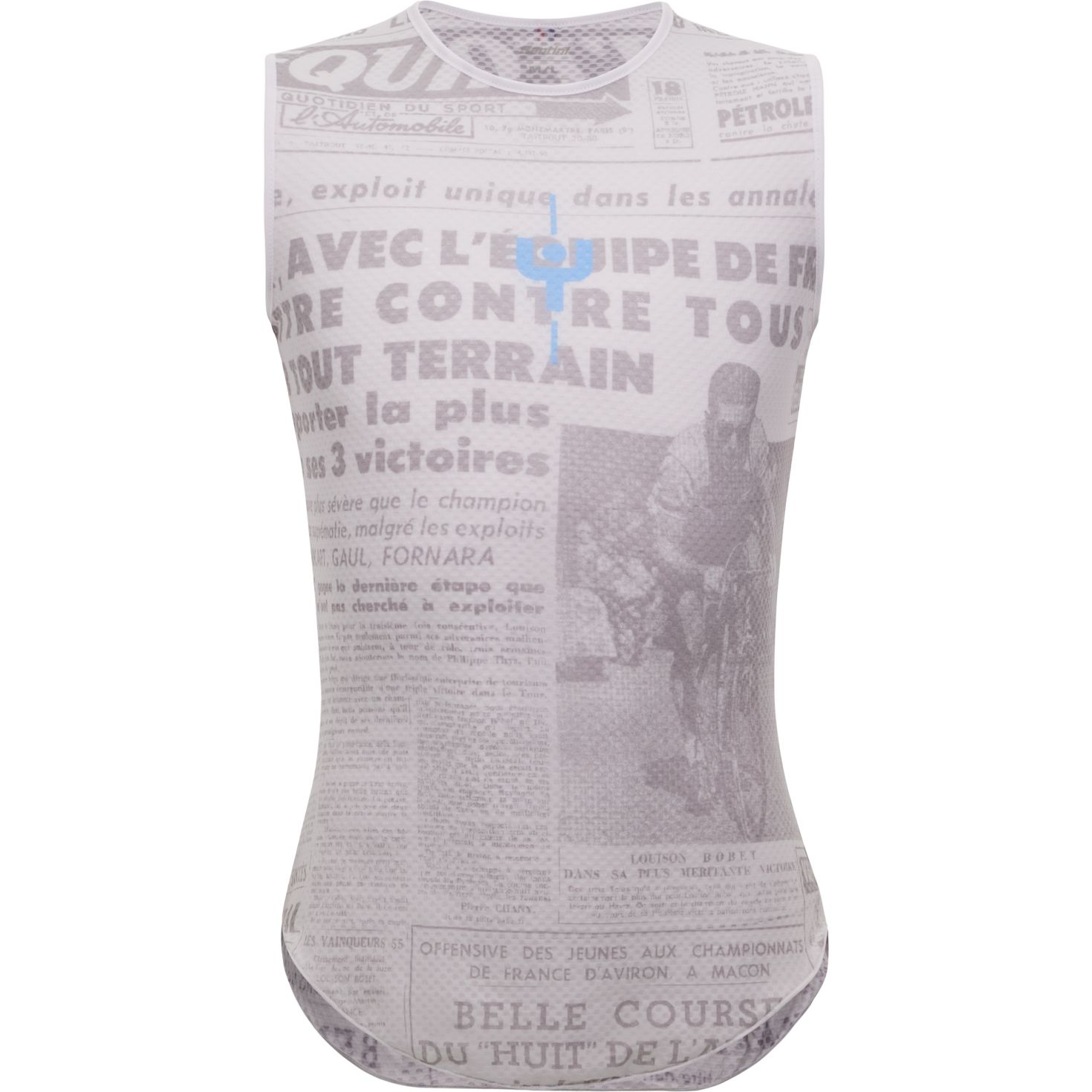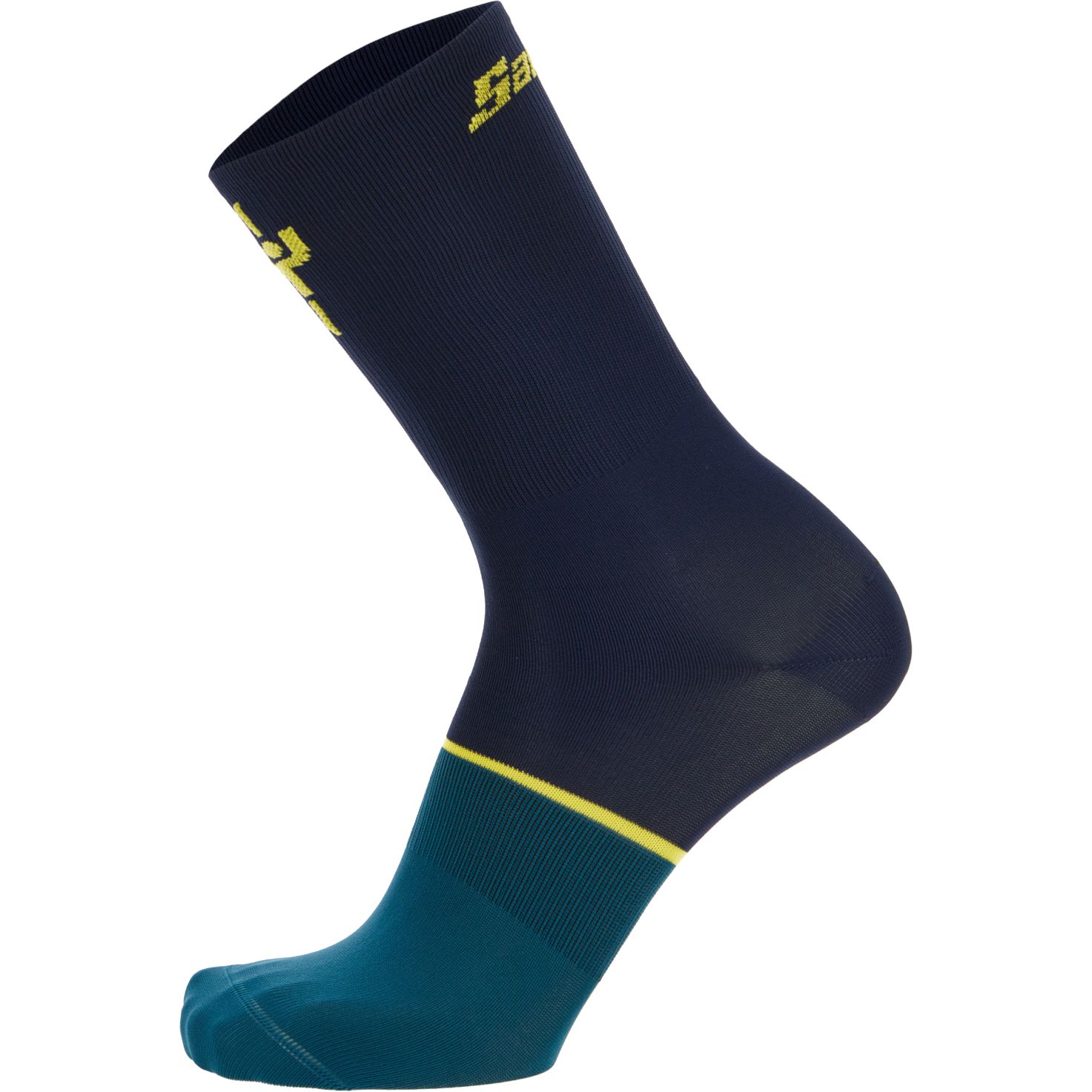- Home
- Enjoy the Tour de France™ 2022 with BIKE24 – Get Your Tour Feeling!
Enjoy the Tour de France™ 2022 with BIKE24 – Get Your Tour Feeling!
The Tour de France™ is the toughest road race in the world. It also stands for the freedom to ride through spectacular landscapes. It’s as much a part of the French way of life as delicious baguettes and good wine. From the July 1 to the July 24, 22 teams will fight for the Yellow, Green and Polka Dot Jersey as well as stage wins on the 3328 km across France. BIKE24 is once again the official retailer of licensed Tour de France™ products for 2022 and wants to help you catch the Tour spirit! Check out replicas of the Tour de France™ jerseys, a top selection of fan merchandise and much more.
Read moreDiscover the Tour de France™ with the BIKE24 Topic Page
In its 109th edition, the Grand Loop (Grande Boucle) is particularly international. In addition to the Grand Départ in Copenhagen (the most northerly start in Tour history) and two other stages in Denmark, there are also sections of the route that lead through Belgium and Switzerland.
Become a Tour de France™ 2022 expert with the following topics:
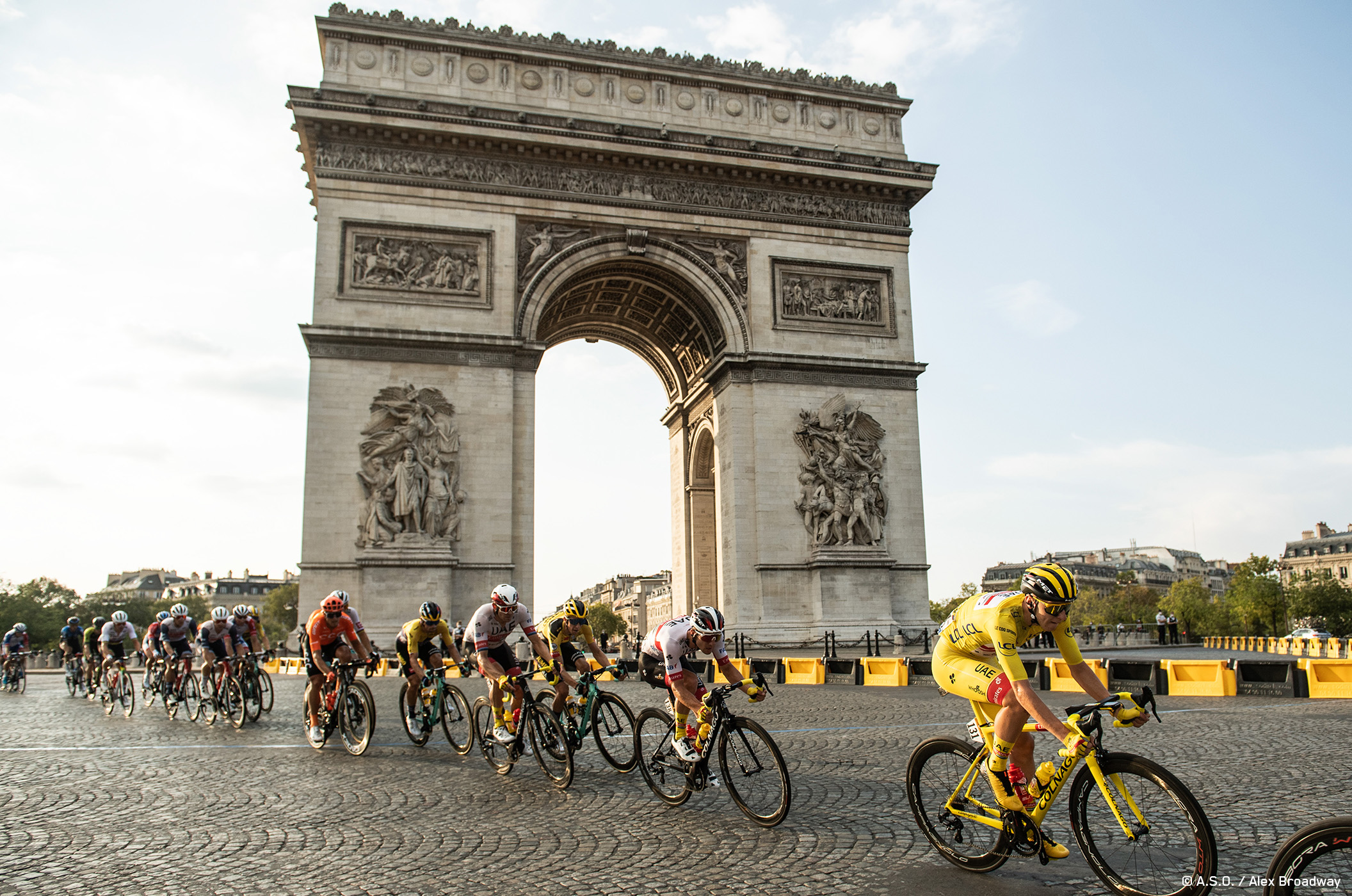
An Overview of the 2022 Tour de France™ Stages
On 1 July, the starting signal for the peloton (riders' field) of the 2022 Tour de France™ will be given in Copenhagen, a date that the biggest cycling teams and their top riders have been working towards for a whole year. Between now and July 24 great stages will show whether one of the youngsters or one of the old pros will roll into Paris on the Champs-Élysées with the yellow jersey and win the Tour de France™ 2022.
There's something for every type of rider: two individual time trials, six flat and seven hilly stages (with Paris-Roubaix cobbled sections) for sprinters, breakaways and puncheurs, and six mountain stages – including a mountain finish in L'Alpe d'Huez – form the main cornerstones of the 109th Tour de France™ edition.
But first things first: Three stages through Denmark make up this year's Grand Départ, with the 13 km individual time trial in Copenhagen being a direct chance for the contenders for overall victory to put their first exclamation mark on the race. The hilly phase begins after the subsequent transfer to France. A highlight will certainly be the 5th stage to Arenberg Porte du Hainaut, which offers 11 cobbled sections with a total length of 19.4 km. There may also be favourites crashing, lots of flat tires and surprising problems.
In 2022, the riders can look forward to mountain stages in the Vosges, the Alps, the Massif Central and the Pyrenees. What means extreme exertion for the riders, challenges climbing specialists to a stage victory and separates the wheat from the chaff in the overall classification will be a true spectacle for the enthusiastic fans, especially at the mountain climbs in Peyragudes and Hautacam as well as at the Plache des Belles Filles – with a final gravel kilometre. But that is not all. With the Galibier double pack before the mountain climbs in Col du Granon on stage 11 and in Alpe d'Huez on stage 12, the route planners are turning several legendary cycling summits into the scene of fierce battles for seconds or minutes.
When, after 19 stages, the points for the polka-dot Tour de France™ mountains jersey will already have been distributed, the overall Tour de France™ classification for the yellow jersey will probably still be left with a question mark. In the second, 40 km long individual time trial, a breath-taking final will help decide who will be immortalised in the annals of cycling and crowned as the overall winner at the Tour d'Honneur in Paris on July 24.
This year's edition of the Tour will once again uniquely combine the historic Tour de France™ spirit and the passion for performance-oriented cycling. Whether at home in front of the TV, on the road bike or even live on stage: With the right fan gear such as jerseys, water bottles, caps and much more, you can easily become part of the world's biggest cycling event and support your favourites and teams in the best possible way!
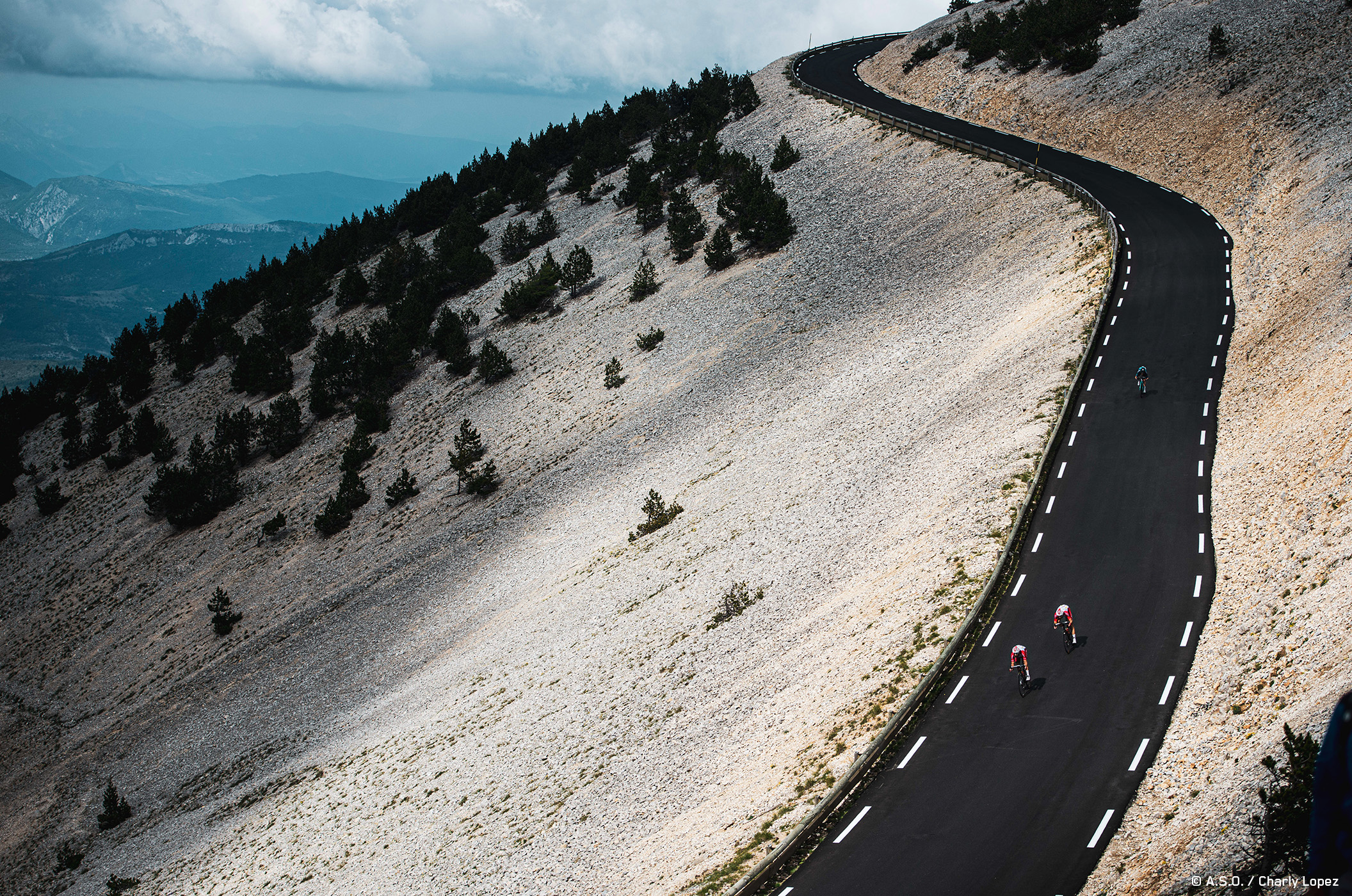
Tour de France™ 2021 Road Map
| Stage | Date | Start – Finish | Distance | Type |
| 1. | July 1, 2022 | Copenhagen – Copenhagen | 13 km | Time Trial |
| 2. | July 2, 2022 | Roskilde – Nyborg | 199 km | flat |
| 3. | July 3, 2022 | Vejle – Sonderborg | 182 km | flat |
| 4. | July 5, 2022 | Dunkerque – Calais | 172 km | hilly |
| 5. | July 6, 2022 | Lille Metropole – Arenberg Porte du Hainaut | 155 km | hilly |
| 6. | July 7, 2022 | Binche – Longwy | 220 km | hilly |
| 7. | July 8, 2022 | Tomblaine – La Super Planche des Belles Filles | 176 km | mountainous |
| 8. | July 9, 2022 | Dole – Lausanne | 184 km | hilly |
| 9. | July 10, 2022 | Aigle – Chatel Les Portes du Soleil | 183 km | mountainous |
| Rest Day | July 11, 2022 | Morzine les Portes du Soleil | ||
| 10. | July 12, 2022 | Morzine les Portes du Soleil – Megeve | 148 km | hilly |
| 11. | July 13, 2022 | Albertville – Col du Granon Serre Chevalier | 149 km | mountainous |
| 12 | July 14, 2022 | Briancon – Alpe d’Huez | 166 km | mountainous |
| 13. | July 15, 2022 | Le Bourg d‘Oisans – Saint-Etienne | 193 km | flat |
| 14. | July 16, 2022 | Saint-Etienne – Mende | 195 km | hilly |
| 15. | July 17, 2022 | Rodez – Carcassonne | 200 km | flat |
| Rest Day | July 18, 2022 | Carcassonne | ||
| 16. | July 19, 2022 | Cacrassonne – Foix | 179 km | hilly |
| 17. | July 20, 2022 | Saint-Gaudens – Peyragudes | 130 km | mountainous |
| 18. | July 21, 2022 | Lourdes – Hautacam | 143 km | mountainous |
| 19. | July 22, 2022 | Castelnau-Magnoac – Cahors | 189 km | flat |
| 20. | July 23, 2022 | LaCapelle-Marival – Rocamadour | 40 km | Time Trial |
| 21. | July 24, 2022 | Paris La Defense Arena – Paris Champs-Élysées | 112 km | flat |

The Tour de France™ Teams 2022
WorldTeams
AG2R Citroën Team
Astana Qazaqstan Team
Bahrain Victorious
Bora-Hansgrohe
Cofidis
EF Education-EasyPost
Groupama-FDJ
Ineos Grenadiers
Intermarché-Wanty-Gobert Matériaux
Israel-Premier Tech
Lotto-Soudal
Movistar Team
Quick-Step Alpha Vinyl
Team BikeExchange-Jayco
Team DSM
Jumbo-Visma
Trek-Segafredo
UAE Team Emirates
ProTeams
Alpecin-Fenix
Arkéa-Samsic
B&B Hotels-KTM
TotalEnergies
Road Bikes, Spare Wheels, Souvenirs and Calories – The Tour in Numbers
As the largest annual sporting event in the world, the Tour is also a masterpiece of organisation. The teams are travelling with a 12-ton truck and several team vehicles to transport the huge amount of material and food for the riders. Even internationally not so successful teams like the lucky wildcard winners B&B Hotels p/b KTM or Total Direct Energie have several sporting directors, masseurs, mechanics, doctors, chauffeurs and cooks with them for the duration of the tour.
In addition, at least 30 Tour de France™ road bikes worth 7000-15000 euros, which have been designed to be even more streamlined than ever before. The matching lightweight road helmets by Kask, glasses by Oakley and cycling caps and around 50 saddle models e. g. from Selle Italia or Fizik, handlebar tapes, sprockets, handlebars and carbon wheels and replacement tires, e. g. made by Continental are a must. For team and individual time trials, at least 20 additional aerodynamic time trial bikes, time trial suits, special aero bars (up to approx. 1000 Euro) and the drop-shaped aero helmets (approx. 170-600 Euro) are required. Road bike shoes, pedals, shift components, smart trainers from Elite – the list could be continued for a long time to come. And for the many jerseys, socks, arm and leg warmers, jackets, gloves and trousers, washing machines are available in the team bus, so that not only the riders' legs are fresh again at the start of the next stage.
And if, despite the best possible organisation in the race, a rider with a technical defect cannot be supported by his own team, there are still the neutral service vehicles. At the Tour de France™ 2022, these will be provided by no one less than Shimano, the bicycle parts manufacturer par excellence in prestigious blue.
In order to replenish the up to 15000 kilocalories that a professional cyclist burns per stage as quickly as possible, many carbohydrates are needed. Each team has between 2000-3000 gels and bars alone, e.g. from sports nutrition specialists such as Namedsport, in their luggage to be consumed on the bike. Against thirst and for the spectators each team has approximately 3000 bottles on stock. They are not only very popular as water dispensers, but also as souvenirs. So everything has been thought of. The cyclists only have to do the pedalling themselves.
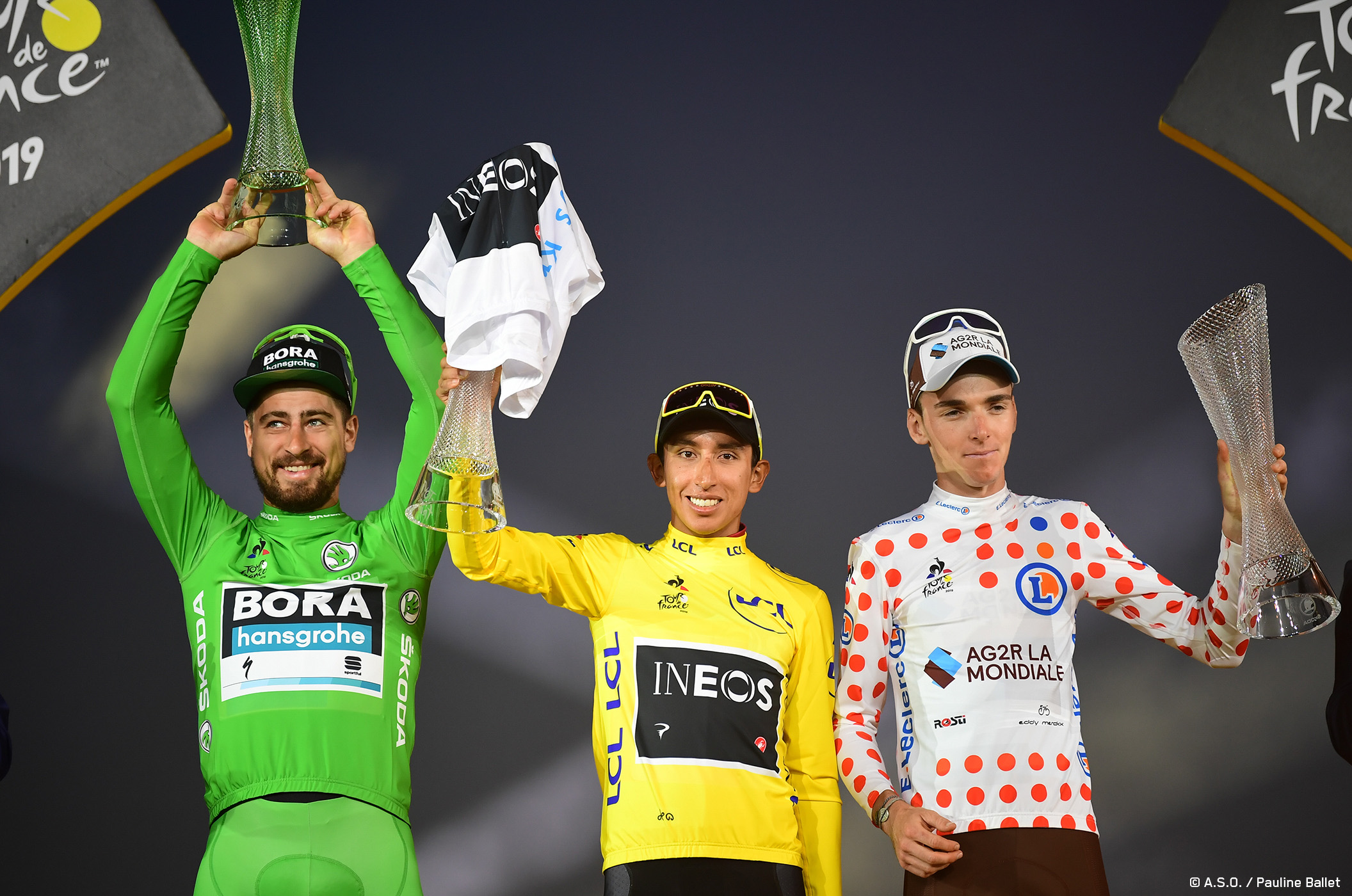
The Tour de France™ Jerseys and Their Scoring
A few points for the green jersey and a few seconds of time bonuses there for the overall classification – if you don't constantly keep an eye on the Tour de France™ in the media, you'll find it hard to keep track of the classification. But don't worry, we'll explain the meaning of each Tour de France™ jersey and how the classification is arrived at.
The Yellow Jersey of the Classification Leader
The leader in the time classification (overall classification) has the honour of wearing the yellow jersey (French: maillot jaune) – the dream of every professional cyclist; to ride in yellow once in their racing career, even if only for one stage. The yellow jersey may well change its carrier several times during the Tour de France™. The rider who leads at the end of the previous stage can wear it at the start of the next stage until the finish.
The Polka-Dot Classification Jersey for the Best Climber
With a field of 22 teams, there are many types of riders. One of them is the mountain rider/climber and the best of them will be awarded with a polka-dot classification jersey. If one of the riders manages to get the most mountain classification points on his scorecard, he will not only receive the Maillot à pois Rouges on July 24th in Paris, but also prize money of a whopping €25000 and a lot more per mountain classification.
The points depend on the mountain category and on the ranking (1st-8th place). Mountains like the legendary Alpe d'Huez climb in the Alps, which is also on the 2022 schedule, with an average gradient of more than 8.1% over 13.8 km, belong to the highest, the Hors Catégorie (HC).
This is how the mountain classification for polka-dot mountain jerseys is created:
|
Category |
Point distribution according to the ranking |
|||||||
|
1 |
2 |
3 |
4 |
5 |
6 |
7 |
8 |
|
|
Hors Catégorie |
20 |
15 |
12 |
10 |
8 |
6 |
4 |
2 |
|
1st category |
10 |
8 |
6 |
4 |
2 |
1 |
||
|
2nd category |
5 |
3 |
2 |
1 |
||||
|
3rd category |
2 |
1 |
||||||
|
4th category |
1 |
|||||||
The Green Jersey for the Best Sprint Rider
Almost all cycling fans know and like him, the friendly Slovak Peter Sagan from Team TotalEnergies. He will also be sprinting for the points for the green jersey in the 109th edition. For the Maillot Vert, as the Tour de France™ green jersey is called in French, the points are distributed in a similar way to the mountains jersey. Most stages offer intermediate classifications as the riders pass through well-known towns and cities, where the comparatively stronger riders sprint for the points. And a great final takes place when the peloton crosses the finish line. Approximately 1000 metres before the finish, the top teams bring their sprinters or potential stage winners into position via approaching helpers at speeds already above 55 km/h. Barely two hundred metres before the finish, the final sprint is at up to 70 km/h.
This is how the sprint classification for the green jersey is created:
|
Category of arrival/sprint |
Point distribution according to the ranking |
||||||||||||||
|
1 |
2 |
3 |
4 |
5 |
6 |
7 |
8 |
9 |
10 |
11 |
12 |
13 |
14 |
15 |
|
|
Flat stage |
50 |
30 |
20 |
18 |
16 |
14 |
12 |
10 |
8 |
7 |
6 |
5 |
4 |
3 |
2 |
|
Medium-mountain stage |
30 |
25 |
22 |
19 |
17 |
15 |
13 |
11 |
9 |
7 |
6 |
5 |
4 |
3 |
2 |
|
Mountain Stage, Individual time trial and Intermediate sprints |
20 |
17 |
15 |
13 |
11 |
10 |
9 |
8 |
7 |
6 |
5 |
4 |
3 |
2 |
1 |
Further Tour de France™ Classification Jerseys
In addition to the more famous Tour de France™ jerseys, there is also the white jersey to award the best young rider. In addition, the most combative rider, who can be identified by the red race number on his back, and the team with the best placed riders overall – yellow race numbers – will also receive prize money.
Do you particularly like one of the jerseys or does it simply suit you and your riding style? Then get your official Tour de France™ jersey from Santini now to express your cycling passion.
What Makes a Road Bike for Professional Racing?
On more than 3000 kilometres with many metres of altitude within a few weeks, serpentine descents at over 100 km/h and top sprint performances of over 2000 watts, a road bike for the pros has to withstand a lot. At the same time, however, it must be particularly light – preferably under 7 kg (minimum 6.8 kg) – and aerodynamic.
We show you how this is possible with the Cannondale Road Bike SUPERSIX EVO Hi-Mod DISC Replica. A semi-aero bike with the frame in team colours that the pros from Team Education First (EF) around Hugh Carthy and Rigoberto Urán also use for competitions.

The Cannondale SUPERSIX EVO Hi-Mod DISC Replica road bike is your optimal basis for top performance. If you want to bring your power to the tarmac even more efficiently, then do it like the pros and upgrade...
...The wheels – On flat and mountain stages, the pros often use carbon wheels for disc brakes with a rim profile depth of around 50 mm and ceramic bearings that run smooth as silk. The first choice here is the top series such as Shimano Dura-Ace, FSA-Vision (Team EF) or Mavic Cosmic.
...The shifting system – One shifting error and the competitor takes the race. For even more shifting precision, electronic derailleur systems such as Shimano Dura Ace Di2, SRAM eTap AXS or Campagnolo Super Record EPS series are standard on the bikes of all Tour de France™ riders. The latest road bike shifting groups even offer 2x12 gears in order to achieve more harmonious gear steps with a higher range.
...Performance measurement – There is no Tour de France™ team today that does not rely on training planning and a race strategy using systematic performance analyses. The basis for this are power meters, which you can also retrofit to your race machine. These systems, which are often integrated into cranks from Shimano, SRAM or Rotor, for example, as well as in pedals from Look and Garmin, measure the wattage and send it wirelessly to your bike computer for display and analysis.

